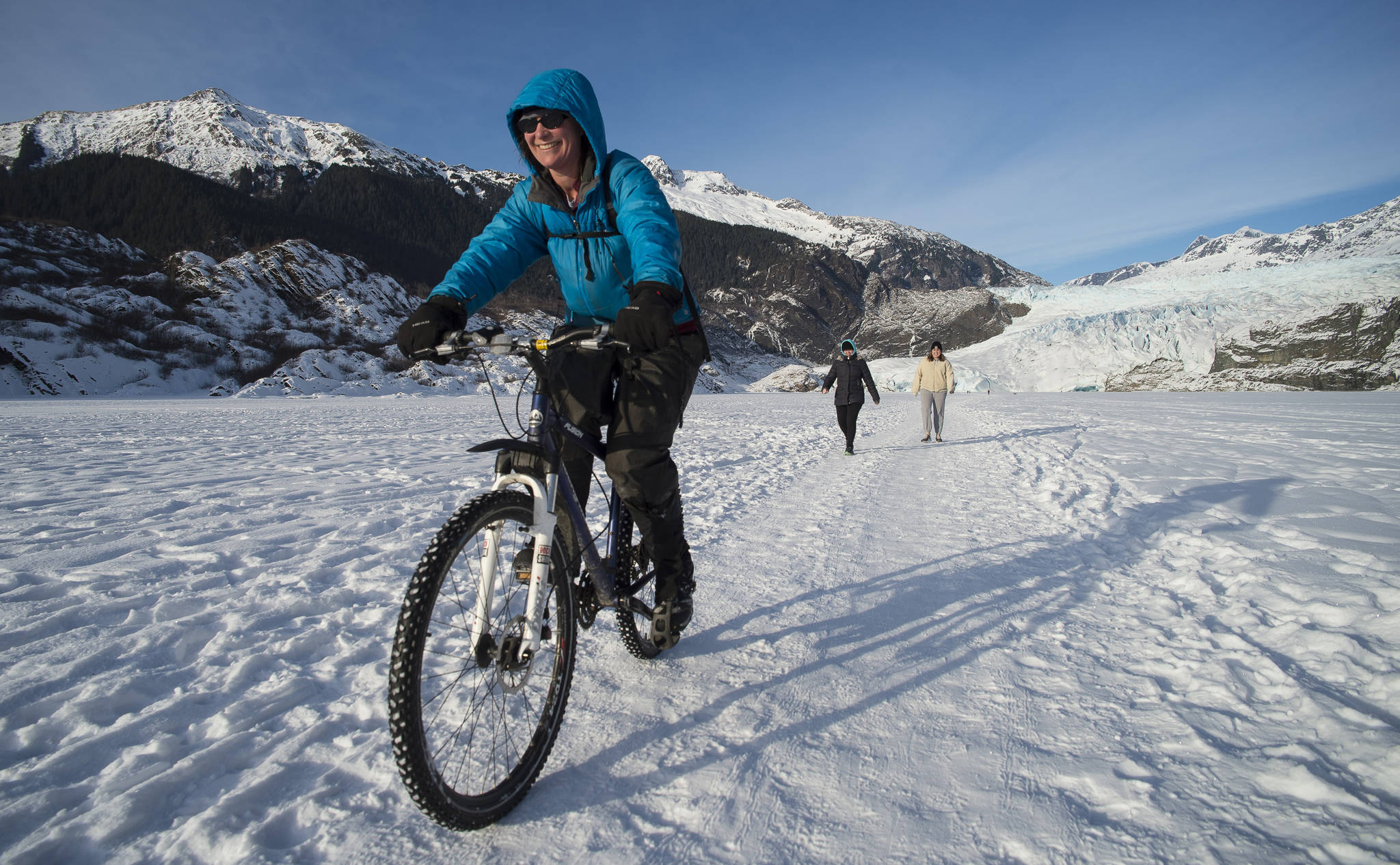It was only cold because it’s been so warm.
According to the National Weather Service, January’s weather here was almost exactly normal for the capital city. Measurements taken at Juneau International Airport show an average monthly temperature of 28.5 degrees, two tenths of a degree above normal.
That’s the first time in six years that January temperatures have been so close to normal. January temperatures from 2014 through 2016 were well above freezing; January 2017 averaged 29.8 degrees. Juneau hasn’t had a colder-than-normal January since 2012, when temperatures averaged 26.9 degrees.
Lower temperatures didn’t bring more snowfall this year. January is normally the snowest month of the year in the capital city, averaging 27.7 inches of flakes, but that didn’t happen this winter. Only 14.9 inches of snow fell during the month, and Juneau began February with largely snowless scenery.
Through Monday morning, Juneau has seen only 41.7 inches of snow this winter, a foot and a half below normal for this point in the season but well above the total at this point last winter (28.9 inches). Juneau averages 86.7 inches of snow per winter, but it hasn’t seen that much since 2014.
Though January lacked snow, it finished above normal for precipitation, a term used to account for rain and melted snow. January’s tally was was 5.7 inches, about a third of an inch above normal. Most of it came in the first four days of the month, which saw 3.65 inches of precipitation.
If the month started wet and (relatively) warm, conditions shifted toward the end of the month to colder and dry. The last nine days of the month were colder than normal, and a reading of 8 degrees on the evening of Jan. 28 was the coldest of the month at the airport, the city’s official measuring point. The coldest mark this winter so far is a low of one degree on Dec. 31.
The start of February has seen the cold trend continue and deepen, with the first four days of the month all registering 10 or more degrees below normal. Weather Service forecasters here predict light snow over the capital city starting Tuesday, with temperatures warming above the freezing mark by midweek. Temperatures are then expected to fall below the freezing mark again by the weekend.
• Contact reporter James Brooks at james.k.brooks@juneauempire.com or call 523-2258.

